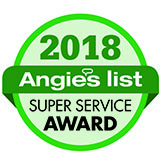Sustainability is a very important word now, but our parents and grandparents knew it by different phrases.
“Get your money’s worth,” they said.
“Make it last.”
“Don’t waste anything.”
“Think ahead!”
That common-sense wisdom is part of the sustainability movement, which includes Variable Refrigerant Flow technology, a smarter, cleaner system for cooling and heating buildings.
VRF is a big step forward from current outmoded mechanical systems that rely on dirtier fuel sources.
VRF, an all-electric system, lets building owners cut operating costs and exist free of fossil fuels. These are great advantages to enjoy as society becomes more aware of environmental and health concerns.
Cold no problem
Early VRF systems struggled in cold climates, but technology has made vast improvements. Today’s VFR systems test well even at temperatures of -27 degrees! The lowest temp on record in NYC is -15 degrees, and that was more than 80 years ago.
New Yorkers can count on VFR to keep them warm.
How VRF works
It takes existing heat from ambient outdoor air or water and converts it to heat inside buildings. And it can cool just as well as it heats.
This is a major improvement over traditional heating systems that burn fossil fields and emit unhealthy byproducts. VFR’s approach is less expensive and healthier, earning it high marks for sustainability.
You can use VFR technology to convert a building into zones honoring individual preferences and criteria such as occupancy and use.
VRF technology divides a building into zones with individual set points based on occupancy and user preferences.
VFR keeps the lid on energy costs, thanks to continuous fan operation and an inverter-driven compressor. The inverter-driven compressor is energy efficient, durable and quiet.
Learn more about VFR now, before your kids and grandkids say you were always behind the times.
The pros at Premier will be glad to help you put VFR technology to work in your building.




